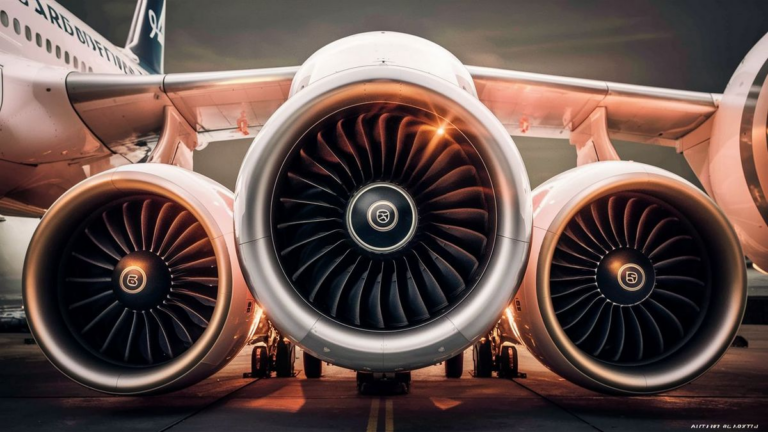When considering the engine options for the Airbus A330, several factors come into play, including performance, efficiency, and environmental impact. The A330, a versatile wide-body aircraft, has been a cornerstone of many airlines’ fleets worldwide, offering flexibility for both short and long-haul routes. Let’s delve into the various engine options available for this aircraft and their implications.
Rolls-Royce Trent 700
One of the prominent engine choices for the Airbus A330 is the Rolls-Royce Trent 700. Known for its reliability and fuel efficiency, the Trent 700 has been a popular choice among airlines operating the A330. With advanced technology and a proven track record, this engine option provides optimal performance, making it suitable for a wide range of operational requirements.
General Electric CF6
The General Electric CF6 engine series is another option available for the Airbus A330. Renowned for its robustness and longevity, the CF6 engine offers excellent thrust capabilities, enabling the A330 to operate efficiently across various routes and conditions. Its versatility and proven performance make it a preferred choice for many operators.
Pratt & Whitney PW4000
Pratt & Whitney’s PW4000 engine series also presents itself as a viable option for the Airbus A330. With a focus on fuel efficiency and environmental sustainability, the PW4000 engines deliver impressive performance while reducing emissions and operational costs. Airlines seeking to enhance their environmental credentials often opt for this engine option.
Engine Performance and Efficiency
Each of these engine options offers unique performance characteristics and efficiencies, catering to different operational needs and preferences. Airlines may prioritize factors such as fuel consumption, maintenance costs, and environmental impact when selecting the most suitable engine for their A330 fleet.
Environmental Considerations
In recent years, environmental considerations have become increasingly important in the aviation industry. Engine manufacturers have made significant strides in developing more fuel-efficient and eco-friendly propulsion systems. Airlines looking to minimize their carbon footprint may opt for engines with advanced environmental technologies.
Future Trends
As technology continues to evolve, the landscape of aircraft engine options is expected to change as well. Manufacturers are investing in research and development to create engines that offer even greater efficiency, performance, and sustainability. The future of engine options for the Airbus A330 holds promise for further advancements in aviation propulsion technology.
Choosing the right engine option for the Airbus A330 is a critical decision for airlines, impacting operational efficiency, performance, and environmental impact. With a range of choices available from reputable manufacturers such as Rolls-Royce, General Electric, and Pratt & Whitney, operators can select the engine that best aligns with their strategic objectives and operational requirements.
Comparison of Engine Specifications
When comparing the engine options for the Airbus A330, it’s essential to consider various specifications to make an informed decision. Below is a comparison table highlighting key specifications of the Rolls-Royce Trent 700, General Electric CF6, and Pratt & Whitney PW4000 engines:
| Engine | Thrust (kN) | Fuel Efficiency (lbs/kN/h) | Environmental Impact |
|---|---|---|---|
| Rolls-Royce Trent 700 | 240 – 320 | 0.36 | Low emissions |
| General Electric CF6 | 267 – 316 | 0.38 | Efficient combustion |
| Pratt & Whitney PW4000 | 249 – 311 | 0.35 | Eco-friendly design |
Operational Considerations
Besides performance and environmental factors, operational considerations also play a crucial role in selecting the appropriate engine option. Factors such as maintenance requirements, spare part availability, and overall reliability are significant considerations for airlines when choosing among the available engines for their A330 fleet.
Engine Maintenance Costs
One of the significant ongoing expenses for airlines is engine maintenance costs. Each engine type may have different maintenance requirements and associated costs, impacting the overall operational budget of an airline. Airlines often analyze maintenance cost projections over the lifespan of the aircraft when making engine selection decisions.
Availability of Spare Parts
The availability of spare parts is essential for minimizing aircraft downtime and ensuring continuous operations. Airlines may consider the accessibility and cost of spare parts when evaluating engine options to mitigate potential logistical challenges and operational disruptions.
Frequently Asked Questions
- What factors should airlines consider when choosing an engine for the Airbus A330?
- How do the Rolls-Royce Trent 700, General Electric CF6, and Pratt & Whitney PW4000 engines compare in terms of fuel efficiency?
- What are the future trends in aircraft engine technology for the Airbus A330?
- How do environmental considerations influence engine selection for airlines?
See also:






